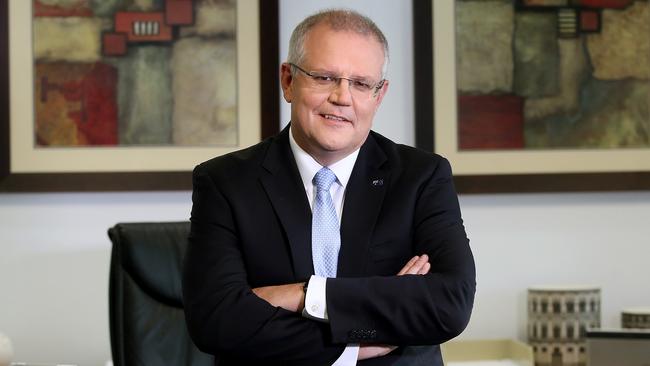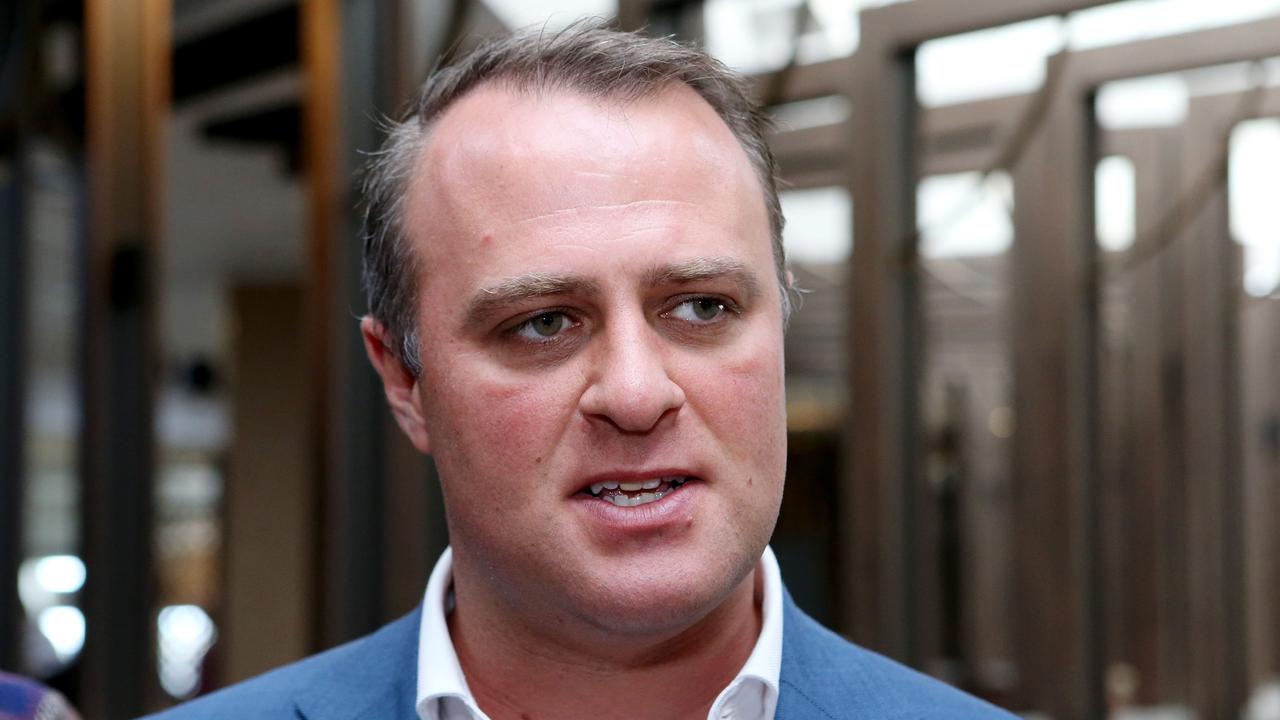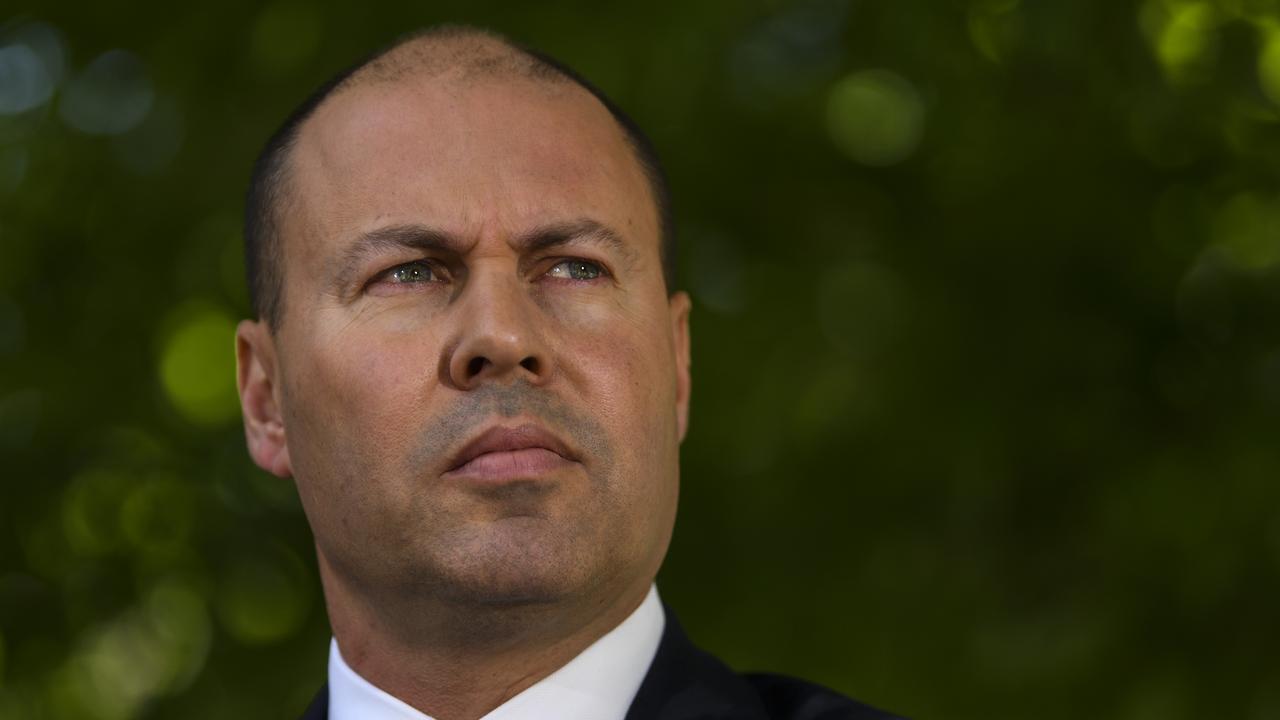Budget 2018: Morrison to deliver fast relief for low-income earners
Scott Morrison confirms workers on less than $87K will get immediate tax relief, while those on $180K also get good news.

Scott Morrison has confirmed that low to middle-income workers on less than $87,000 a year will be targeted for immediate “maximum” tax relief this year.
Tuesday’s budget will also map out a plan to reduce both the thresholds and tax rates paid by the “aspirational class’’ on higher incomes, including those on the top marginal tax rate.
These fundamental changes to the higher tax brackets are slated to kick in as early as 2024.
In an appeal to the Liberal Party base ahead of a budget that will define the stark contrast on tax policy between the Coalition and Labor, the Treasurer has conceded that salary earners on the highest tax bracket have had to bear the greatest share of the tax burden.
Treasury analysis of unpublished Australian Taxation Office data, released to The Weekend Australian, reveals the median personal tax bill for the 400,000 people earning more than $180,000 a year was almost $85,000 a year — an effective average tax rate of 36 per cent.
This compared with a tax rate of only 7 per cent for those earning less than $37,000 and a 19 per cent rate for those earning up to $87,000 a year.
The Weekend Australian understands that the $180,000 threshold for the top marginal tax rate of 45c is expected to be raised over the medium term.
Mr Morrison told The Weekend Australian that the figures showed that the greatest tax burden was levied against higher-income families and exposed Bill Shorten’s claim that the wealthy paid little to no tax. “I can say that our first priority is to maximise and target tax relief to low and middle-income earners … it’s good for them and it is also good for the economy,” he said. “But the notion that somehow that comes at the expense of slugging others on the false pretext that they don’t pay enough tax is pure envy politics … it is nonsense.”
Mr Morrison would not be drawn on whether the budget would reveal an earlier return to surplus on the back of the revenue rebound and spending restraint, despite a senior cabinet minister telling The Weekend Australian that it was expected to be brought forward a year.
While not revealing the changes to tax thresholds to deliver what economists expect to be a maximum of $8 billion a year in personal income tax cuts, Mr Morrison said Labor’s plan to raise the effective top tax rate to 49 per cent would punish those who already paid the most tax.
The Treasury analysis of median taxable income revealed someone who had a taxable income of $190,000 in 2015-16 would ordinarily have faced a marginal tax rate of 49 per cent, comprising a 45 per cent headline rate, plus 2 per cent Medicare levy, plus the 2 per cent temporary budget repair levy. This resulted in a tax bill of $63,047, amounting to the equivalent of twice the wages of a low-income earner.
By contrast, the median personal income tax rate of the 5.2 million people earning between $37,000 and $87,000 in 2015-16 was just 19 per cent — or a little over $10,000.
The Coalition has already dropped a plan to increase the Medicare levy by 0.5 per cent for all taxpayers to help pay for the National Disability Insurance Scheme. It is also axing the 2 per cent temporary deficit levy, meaning the top tax rate will revert to 45 per cent, plus the existing 2 per cent Medicare levy, offering relief to higher taxpayers. Labor plans to keep the deficit levy, meaning the top rate would be an effective 49 per cent.
Mr Morrison said there were strong economic and political reasons for targeting tax cuts at the low to middle-income earners, who had been suffering from low wage growth.
“Tax relief of middle to low-income earners underpins the economic policies that support stronger consumption from an economic view and from an empathy point of view,” he said.
Mr Morrison said many lower to middle-income earners could see from employment numbers that the economy was doing well but were saying “we haven’t felt that yet”.
National accounts measures of household consumption have been volatile but the overall trend has been only modest growth. Tax relief could help lift consumption, which represents almost 60 per cent of the economy.
Mr Morrison said low to middle-income earners, with wages of less than the $87,000 threshold where the second top rate of 37c in the dollar kicks in, were the government’s target in next week’s budget. They had the greatest propensity to lift spending in response to tax cuts.
Deloitte Access Economics has calculated that tax cuts delivering greatest benefit to these groups could be achieved by raising the tax-free threshold from $18,200 to $20,000 and the threshold at which people start losing 32.5c in the dollar from $37,000 to $40,000.
This would cost the budget about $8bn a year, and would represent a gain of almost 2 per cent for people earning $40,000, dropping to about 0.6 per cent for those earning more than $150,000.
Mr Morrison sought to allay concerns that the improved budget position was a flash in the pan, saying it reflected the strength of the economy and a structural improvement in company tax payments. “A lot of what we’ve seen in the last six or nine months has been what has physically come into the coffers of Treasury — it’s real money that’s turned up,” he said. “It is a structural improvement, even taking account of the enterprise tax plan which is in all of our numbers.”
Mr Morrison said the budget forecasts on commodity prices had been conservative and this would continue. Iron ore prices have averaged about $US65 a tonne this year (allowing for freight) or about $US10 a tonne above Treasury’s previous forecast.
He said the main reason for growth in company tax receipts this year was that companies had used up tax losses incurred in the years following the end of the mining investment boom.




